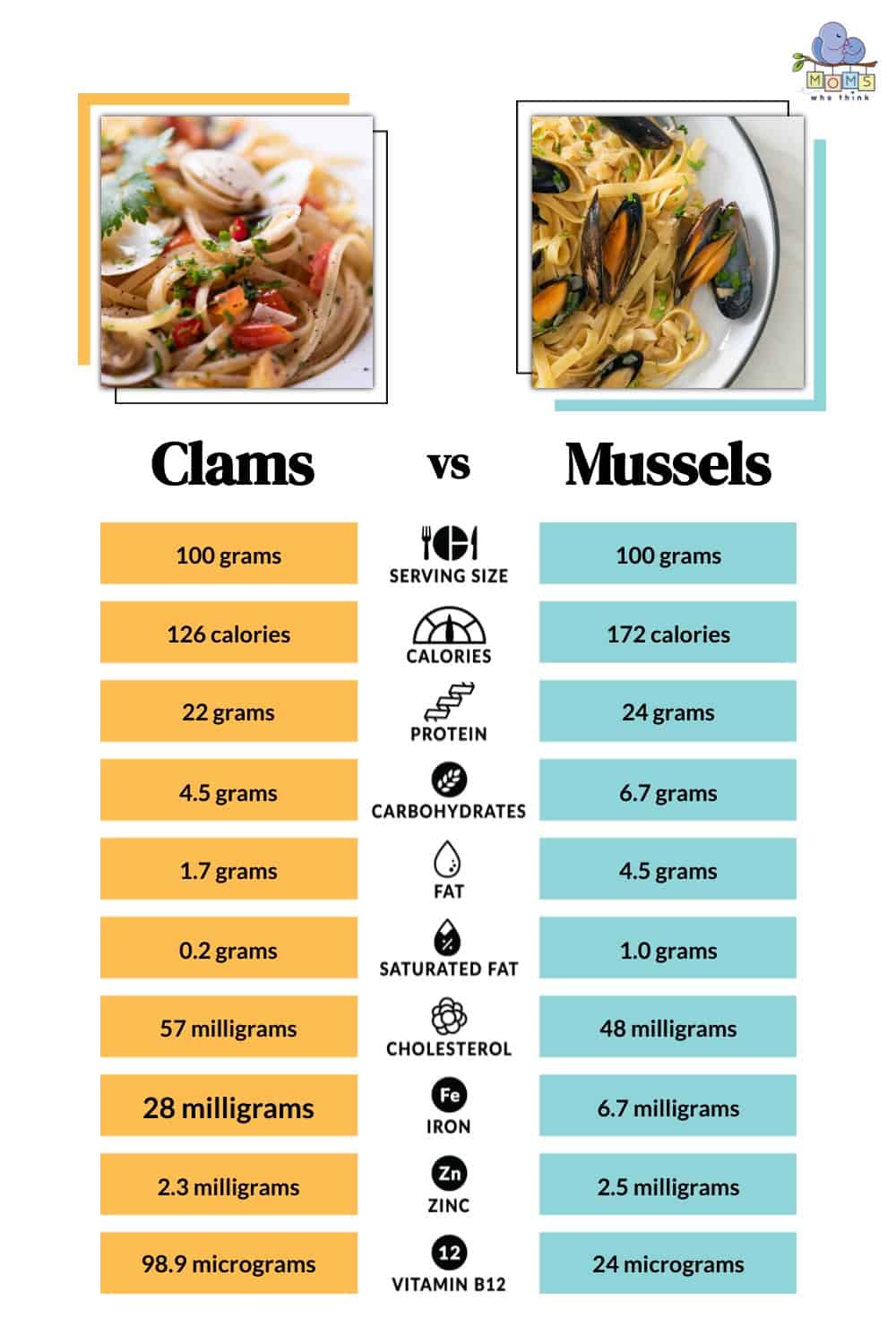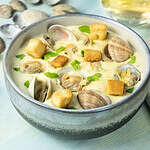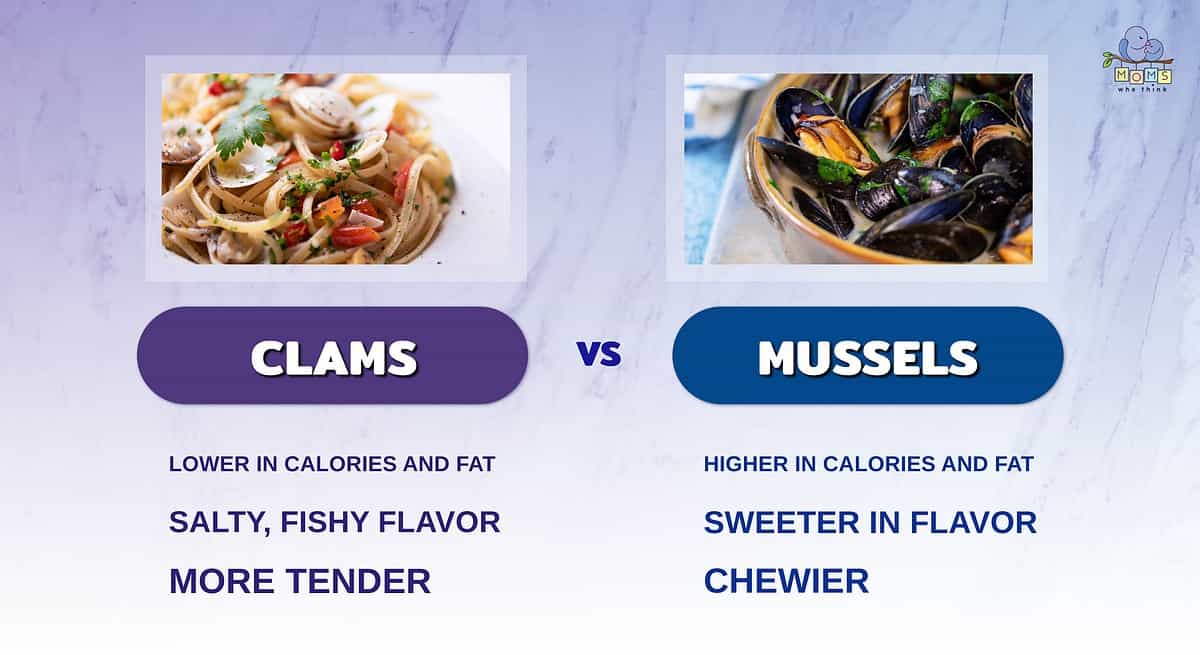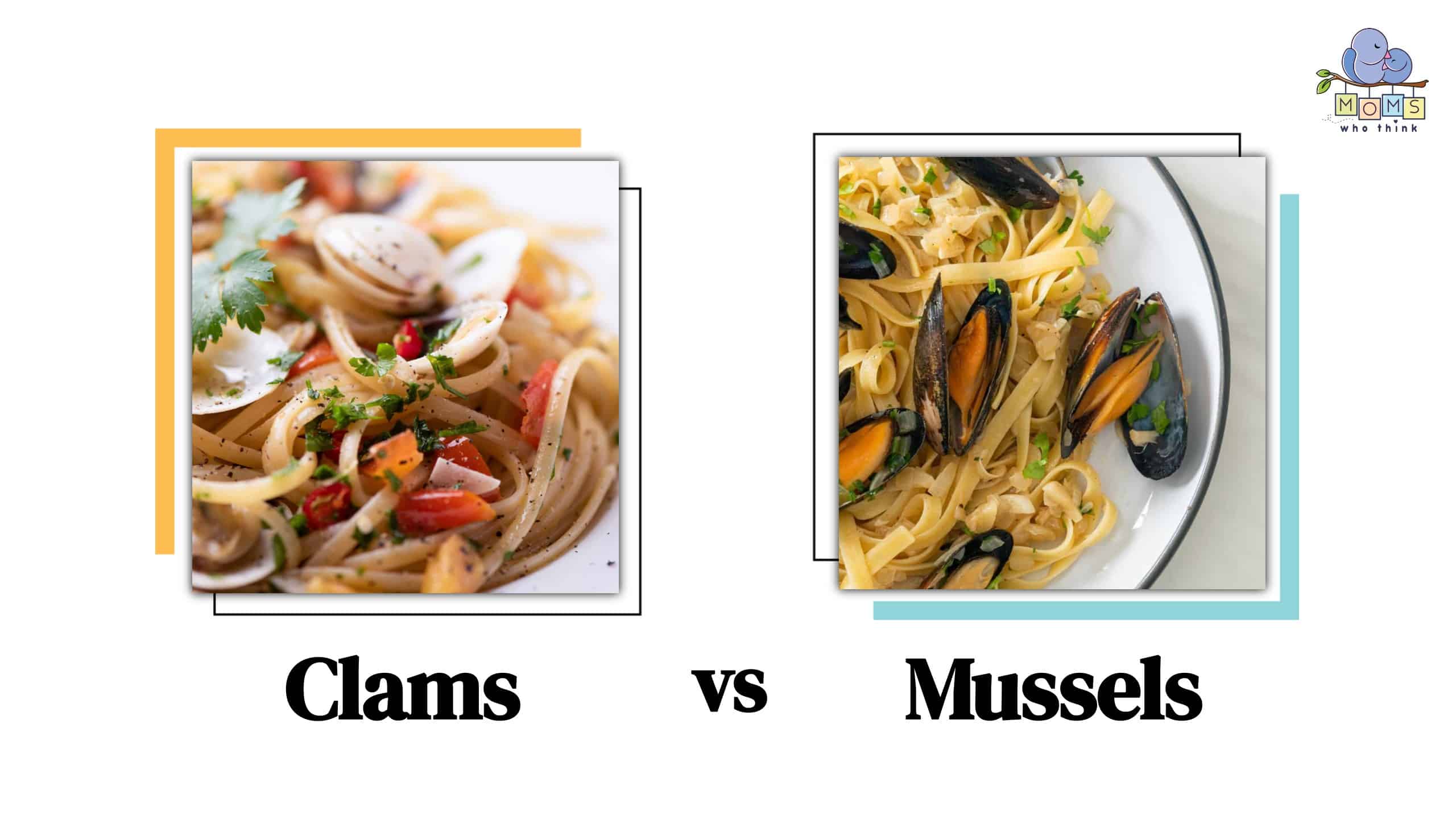Clams vs. mussels: What are the unique differences? You may find them hard to distinguish since they look similar and are both a kind of shellfish. However, there's more to clams and mussels than you might realize. They look different, taste different, and have different nutritional values.
There are also a variety of clams and mussels. In fact, there are over 150 different kinds of clam. Nearly 300 other types of mussel species exist, but not all of them are edible. In fact, only 17 are edible. These are important things to know if you love learning or eating clams or mussels.
This guide explores the unique differences between clams and mussels when it comes to history, core differences, and nutritional value. You'll ultimately discover that clams and mussels are miles apart. While they may come from the ocean and look the same, they are quite different.
Clams vs. Mussels: The Unique Differences

While clams have been eaten for thousands and thousands of years, mussels are relatively new. For example, mussels were discovered in North America in 1986. They were found in the Great Lakes in Lake St. Clair in June 1988.
Looking more at the history of clams and mussels can give you more insight into how they were discovered and consumed.
The History of Clams vs. Mussels
One of the oldest clams ever found was a 507-year-old Ming the Mollusk. It was discovered off the coast of Iceland in 2006. Different cultures around the world have consumed clams for thousands and thousands of years. However, if you look at America, specifically New England, there's some history around clams dating back to 1916. Ruth Bass of Duxbury, Massachusetts, noticed her pigs eating clams. This led to a variety of ways to eat clams.
According to scientists, Neanderthals were consuming mussels over 80,000 years ago. However, in America, blue mussels weren't popular until World War II. In the 1970s, mussel aquaculture became more prominent in North America. It's also important that each state has different consumption of mussels and clams. States like Maine produce the most clams. Alaska is another state that is known for its seafood production.
The Core Differences
While there are specific differences between clams and mussels, there are also similarities worth noting. For example, clams and mussels are both shellfish. They are also bivalve mollusks, which means they have a shell that separates into two parts. They also both come from freshwater and saltwater. Another key similarity is how they are made in different recipes. One such example is how they both can made with tomato sauces.
When it comes to differences, clams and mussels are much different in texture and taste. For instance, mussels are sweeter and a bit more chewier than clams. Additionally, mussels don't have a fishy taste. In contrast, clams are not as sweet and have a more tender texture. Clams also tend to have a saltier flavor and much fishier taste.
The Nutritional Differences
Clams and mussels are both very nutritional. They have health components that promote a healthy heart because of the inflammatory effects found in both shellfish. For example, omega-3 fatty acids and vitamin B12 are found in clams and mussels that help lower your risk of heart disease and help you regulate blood pressure.
When it comes to mussels, there are different ways to get the most health benefits out of it. For instance, canned mussels offer the same health benefits as fresh mussels. The only concern is the sodium, especially if you want to reduce sodium intake.
Recipe Ideas for Each
Clams and mussels offer some of the best recipes. They either complement meals or stand-alone. However you decide to eat them, you'll discover various ways to prepare clams and mussels that make for a nutritional and delicious meal.
Here are some different recipes for clams:
Print
Creamy Fish and Clam Chowder
- Yield: Serves 4
Ingredients
2 medium potatoes, cut into cubes (about 2 cups)
1 cup frozen corn
1 small leek, thinly sliced
8 ounces bottled clam juice
1/4 cup water
1/4 teaspoon dried thyme, crushed
1/4 teaspoon salt
1/8 teaspoon pepper
12 ounces evaporated skim milk
12 ounces fresh or frozen cod fillets, cut into 1-inch pieces
6 ounces canned minced clams
Instructions
1. In a large saucepan, combine potatoes, corn, leek, clam juice, water, thyme, salt, and pepper. Bring to boiling; reduce heat. Cover and simmer about 10 minutes or until potatoes are just tender.
2. Stir in milk.
3. Add fish and undrained clams. Return to almost boiling; reduce heat. Cover and simmer for 3 to 4 minutes or until fish flakes easily with a fork. Do not boil.
Nutrition
- Serving Size: Per serving
- Calories: 240
- Sodium: 534mg
- Fat: 1g
- Carbohydrates: 34g
- Fiber: 3g
- Protein: 24g
- Cholesterol: 38mg
- Buttery Garlic Steamed Clams
- Linguine With Clams
- Clam Chowder Soup
- Spaghetti With Clams
Here are some different recipes for mussels:
- Steamed Mussels With White Wine Broth
- Mussel Soup
- Drunken Mussels
- Creamy Garlic Mussels
What's the Better Choice Between Clams and Mussels?

- Mussels are higher in calories and fat compared to clams, but not by much. Both choices are good if you're watching your calories and fat intake.
- The flavor of clams is usually described as salty and fishy. Mussels lack this fishy taste, instead being rather sweet in flavor.
- Mussels are chewier than clams, which some may find off-putting.
Clams and Mussels have a lot of similarities and differences that make them unique. Their history shows how they have grown in popularity and are now found in restaurants across the United States. Additionally, knowing how they taste different can give you an idea of which one you should try. It can give you an idea of what recipes to cook and the health benefits you get from eating either.
Ultimately, there's no wrong choice between clams and mussels. They are seafood that are delicious and healthy. They complement meals. They are the perfect food for any occasion.


